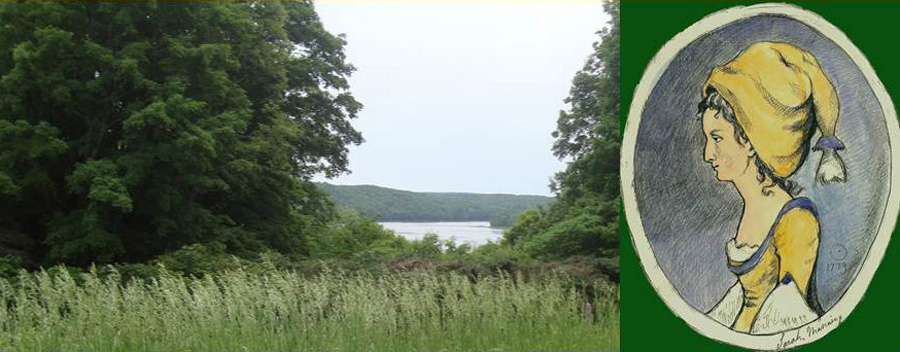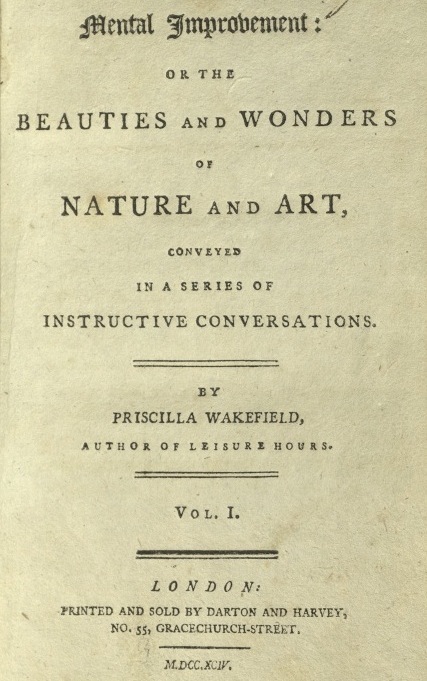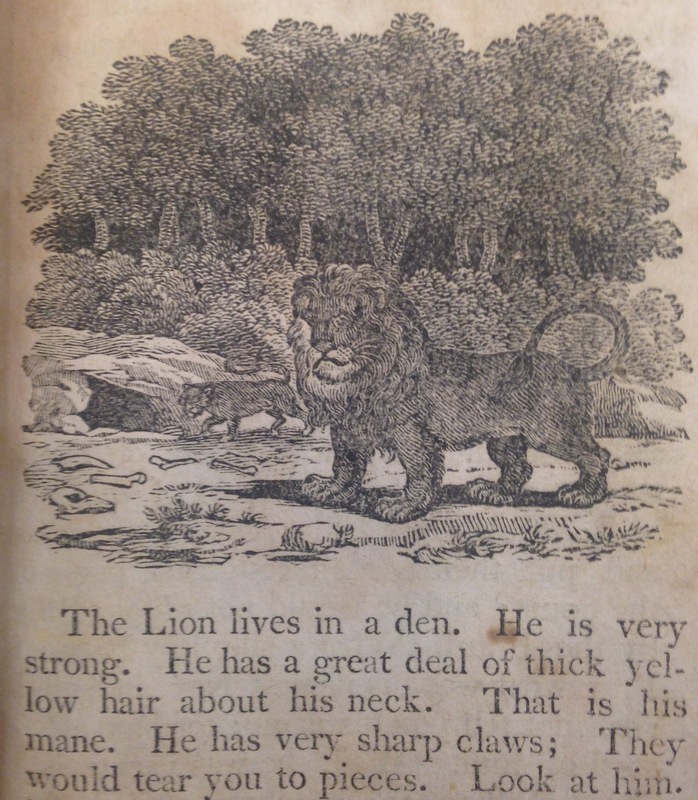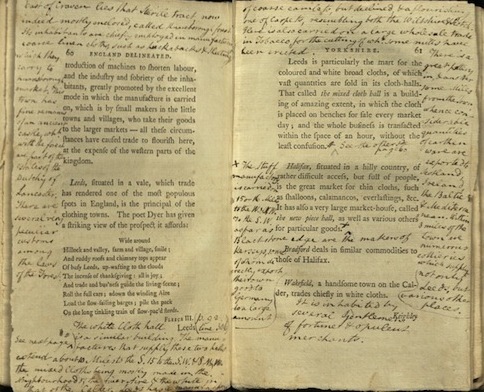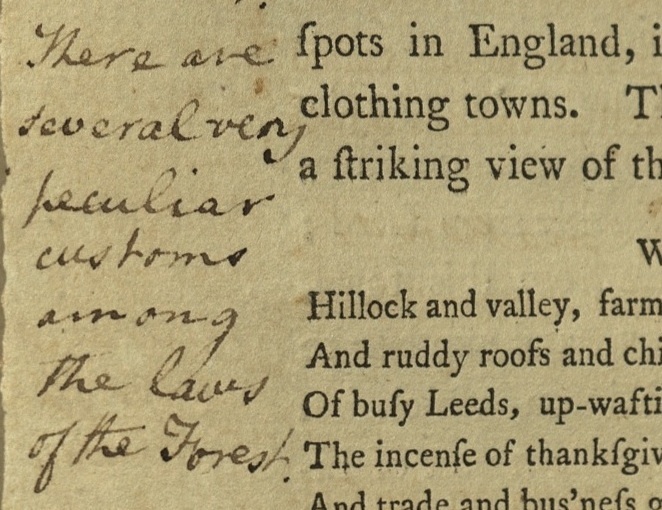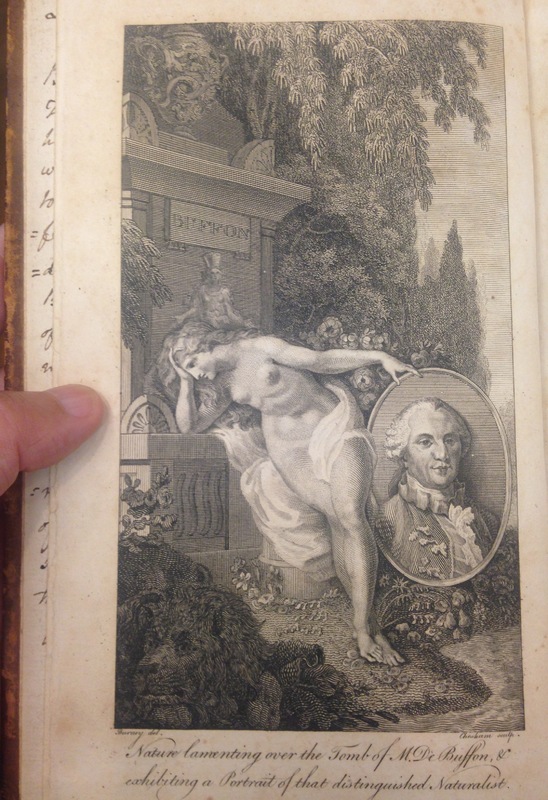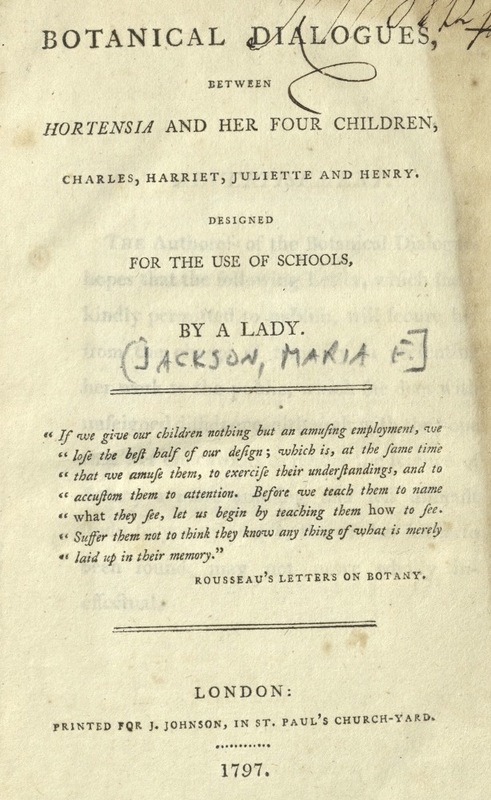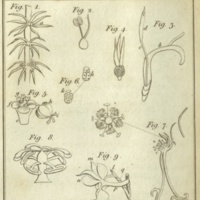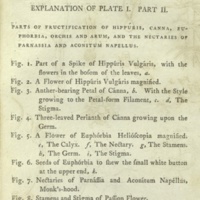On ATTENTION and Natural History
The books of Nature & of Revelation equally elevate our conceptions & incite our piety; they mutually illustrate each other, they have an equal claim to our regard, for they are both written by the finger of the one eternal incomprehensible God.
Bishop Watson (Quoted on the title page of Buffon's Natural History, Abridged. 1792)
Mental Improvement: or the Beauties and Wonders of Nature and Art
Educational books of the 18th and early 19th centuries stressed the importance of engaging children's "attention," and the study of geography and of Natural History were considered particularly suited for this task.
In the Preface to Mental Improvement, Priscilla Wakefield quotes Dr. Isaac Watts (1674-1748), a dissenting minister, logician, and popular hymn writer:
...there are four methods of attaining knowledge. Observation, reading, conversation, and meditation. The first lies within the compass even of children, and from the early dawn of reason, they should be accustomed to observe every thing with attention, that falls under their notice. (emphasis added)
Presented as a series of familiar conversations within the Harcourt family, this volume covers a broad range of topics relating to nature and the arts, from the "Curious properties of the Limpet" and "Reflections on the Order and Wisdom of Creation" to the "Natural History of Sheep" and "The Manufacture of wool."
As Sophia Harcourt (aged sixteen) says to her younger sister Cecilia (aged twelve):
How happy we are, my dear sister, to be blessed with such parents, who devote so much time to our instruction and amusement; with what tenderness do they listen to our conversation, and improve every subject that arises to our advantage!
Barbauld's Lessons for Children continued...
Madame Barbauld's Lessons for Children provides the perfect example of a mother who is actively instructing her three-year old son "from the early dawn of reason...to observe everything with attention" in a manner that Dr. Watts would approve.
In this scene we see mother and son engaged in attaining knowledge through observation, when, at the end of the day, sitting on the veranda, the mother draws young Charles's attention to the night sky:
But now, Charles, turn your face the other way, to the East. What is it that shines so behind the trees? Is it fire? No, it is the moon. It is very large; and how red it is! like blood.
Although conversation in Lessons for Children usually focuses on the child's immediate surroundings, it also extends to the larger world, as in the example of the Lion.
The mother activates both Charles's curiosity and fear by connecting this terrifying creature to his everyday experiences:
He has very sharp claws; They could tear you to pieces. Look at him. He is very angry. See he lashes his sides with his tail. his eyes sparkle like fire. He roars; how loud he roars! It is very terrible. He shews his sharp teeth...Any body would be afraid of a lion if he was to come. Yes, any body would be afraid of a Lion, Charles: but you need not be afraid of dogs, they are good creatures.
Through the ongoing flow of conversation, the mother artfully connects her discussion of the Lion to Charles's real fear of dogs, and the contrast works effectively to put his everyday, immediate fears into perspective.
The influence of Anna Laetitia Barbauld's Lessons for Children, as well as the books by her brother John Aikin, are openly acknowledged in another volume of familiar dialogue in Sarah Vaughan's collection, entitled Winter Evenings; or Tales of Travellers.
Winter Evenings; or, Tales of Travellers
The title page of Winter Evenings evokes the enchantments of oral lore--"By night the village matron, round the blazing hearth suspends the infant audience with her tales"--but Hack makes it quite clear that this will not be a collection of fantastic or supernatural stories:
The praise bestowed by Dr. Johnson on Mrs. Barbauld's little books for children, is a proof that he did not entirely believe his own assertion, that, 'babies do not want to hear about babies.' How far the supernatural tales that delighted his infant ear, had a tendency to check the progress of his vigorous mind, by shading it with the gloom of superstition, this is not the place to inquire. Stories of giants and castles do not accord with the taste of the present day.
The implication is that even a mind as brilliant as that of the prominent 18th century essayist and literary critic Samuel Johnson (1709-1784) might have turned out to be brighter still had he not been exposed from a young age to the "gloom of superstition."
The author goes on to argue that books for children should give them the "sober assurance that they are being treated like reasonable beings, and admitted to the knowledge of the truth, as they are able to understand it."
The following Tales are extracted from respectable authorities only; therefore, every story that succeeds in fixing a child's attention, will be an accession to his little store of real knowledge. Some remarks on national character &c. not to be found in the works referenced to are occasionally introduced; and most of these passages are taken from the Geographical Delineations of Dr. Aikin. (emphasis added)
The Frontispiece engraving suggests the fanciful tales of the Arabian Nights, but, as the title "Death of a Traveller in the Desert" alerts us, emphasis is placed on the stark realities of travel:
Examples of courage, of patience, of fortitude, of generosity and benevolence, and, above all, of reliance on the Supreme Disposer of events, on occasions of danger and distress, will have a natural tendency to strengthen and elevate the character.
England Delineated; or, a Geographical Description of Every County in England and Wales
The Vaughan collection contains several books by Dr. Aikin, and it is possible that Hack is referring to, among others, his England Delineated. In Benjamin Vaughan's memorial statement, he mentions Sarah taking trips throughout Europe with relatives. There are also references in letters and biographies to frequent visits to France after her marriage, but there is little to indicate how much she traveled within England itself. It is difficult to determine, therefore, whether Sarah's copious notes in this volume are the product of direct observation, hearsay, or research, but they give us a rare window onto the workings of her mind and where her attention was chiefly engaged.
To Aikin's description of "the mixed cloth hall" in Leeds, Sarah has added a detailed note that continues to the top margin of the next page:
The white cloth hall is a similar building. The manufactures that supply these two halls extend about 10 Miles to the S. 15 to the S. W. & N. W...Here is also carried on a large wholesale trade in Tobacco, for the cutting of which some mills have been erected. There is a great pottery in (Leeds?), & another some Miles from the Town whence considerable quantities of earthenware are exported to Scotland, Ireland, the Baltic & Mediterranean.
After Aikin's description of the new piece hall market house in Halifax, where they sell "thin cloths, such as shalloons, calamancos, everlastings, &c.," Sarah has made an X to direct the reader to the left-hand margin, where she has added:
X The Stuff manufactory is carried on 15 or 16 Miles to the W. & N.W. To the S.W. as far as Blackstone edge are the makers of Kerseys, some of whom directly export their own goods to Germany to a large amount.
Sarah's notes reveal her to be an active and attentive reader, who frequently updated and supplemented information in her books, especially of geography and natural history, with her own hand-written observations in the margins.
Sarah's notations in England Delineated make mention of castles and their surrounding lore, but her writing in this vein is notably less detailed. On the left-hand margins of the pages above (enlarged at left), she writes of Knoresborough market: "This town has fine remains of an ancient castle which with the forest are part of the estates of the Dutchy of Lancaster. There are several very peculiar customs among the laws of the Forest."
Although she does not go into the particulars, we may assume that the "laws of the Forest" involved the very kinds of superstition that Hack and other Enlightenment writers would have disapproved. It is perhaps not surprising that Sarah--a well-educated merchant's daughter who married into a prominent merchant family--would apply a greater level of attention to the practical details of trade and manufactures than to what would have been considered romantic fantasy.
In the 18th century, study of geography and Natural History were inextricably linked to topics of trade and manufacture, as can also be observed in the title of a pocket-sized series in five volumes below.
A Modern System of Natural History. Containing Accurate Descriptions, and faithful Histories, of ANIMALS, VEGETABLES, and MINERALS. Together with Their Properties, and various Uses in MEDICINE, MECHANICS, MANUFACTURES, &c.
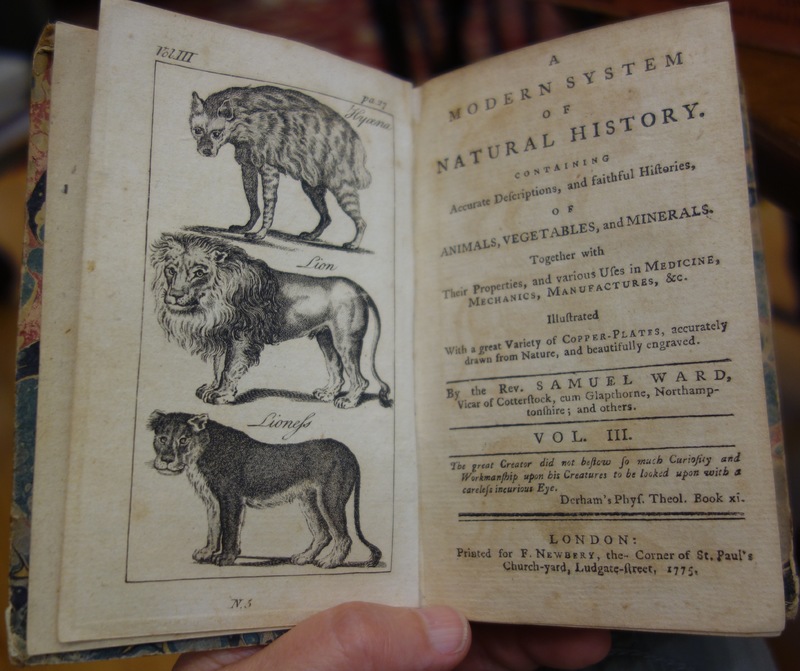
Hyena, Lion, and Lioness in A Modern System of Natural History.
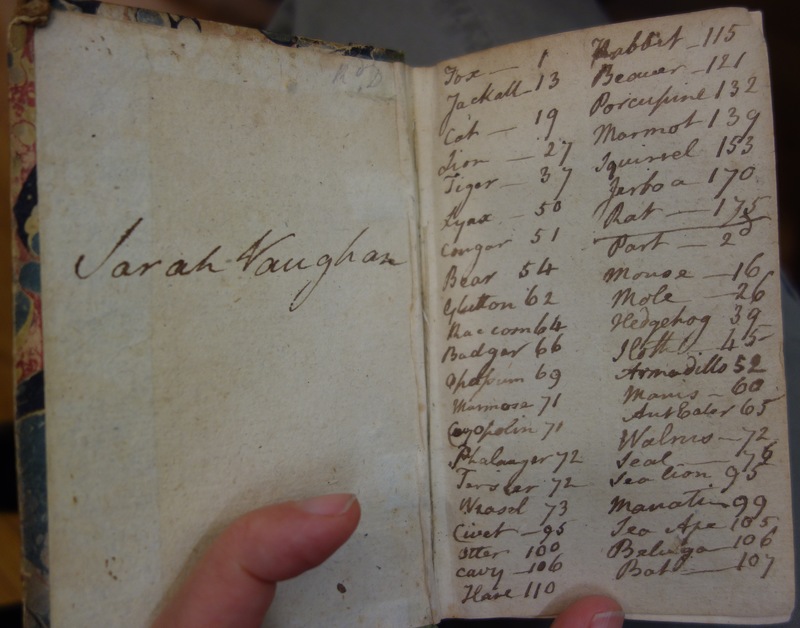
Table-of-contents for A Modern System of Natural History.
Here we see the Lion presented in a somewhat different context as part of a system connecting it to other mammals of similar structure, such as the Hyena. In the Preface, Ward acknowledges the importance of developing a modern system in this abridged format so that Natural History can be more popularly studied:
Without method very little progress can be made in the science of Natural History; it is that alone which fixes the attention to one point, and leads it, by flow and certain degrees, to leave no part of nature unexplored.
In spite of the stress placed on method, however, the author or publisher failed to supply a tables of contents to facilitate the readers' investigations, so again, we see Sarah actively taking charge of her library, writing a table of contents by hand for each of the five volumes.
Author Reverend Samuel Ward laments that popular study of Natural History has been impeded by, among other things, the expense of the large and multi-volume productions of many of its leading investigators and the long-term feud between the two giants in the field Georges-Louis Le Clerc, Comte de Buffon (1707-1788), and Swedish naturalist Carl Linnaeus (1707-1778):
The French naturalist never mentions the Swede but with contempt; and Linnaeus, in return, never deigns to quote the Frenchman, fearing he should, by that means, confer upon him too much honor.
Interestingly, the Vaughan collection contains an abridgement Buffon's 36-volume Histoire Naturelle (History of Nature) paired down to two volumes.
Buffon's Natural History, Abridged. Including the History of the Elements, the Earth, Mountains, Rivers, Seas, Winds, Whirlwinds, Waterspouts, Volcanoes, Earthquakes, Man, Quadrupeds, Birds, Fishes, Shell-Fish, Lizards, Serpents, Insects, & Vegetables.
Sarah's propensity to add extensive annotations to her books is particularly evident in this volume. On the Frontispiece, Nature is personified as a woman, lamenting over Buffon's tomb. Peeking out from behind this image, we see two hand-written pages of notes, transcribing a lecture about Buffon in French, which is followed with a translation in English.
The lecture recounts how Buffon's assistant Guenaud de Montbeliard wrote "The History of Birds," in a style so like Buffon's that Buffon's readers thought it was the master's hand:
Buffon instead of being offended at the mistake of the public, was gratified at the choice he had made & enjoyed the pleasure of having formed the glory of his friend...
Both this lecture and the author's preface emphasize the incompleteness of Buffon's massive work, but the author also stresses his own efforts to make these complicated topics "suit the understandings of young persons," and he comments that "it was in a great measure intended for the use of the fair sex."
No part, indeed, of these volumes, will, we flatter ourselves, be found in the least difficult to be comprehended by the youngest class of readers, if we perhaps except the four first pages and the BOTANY.
Given the level of difficulty accorded to the study of botany, it must have been a particularly enticing challenge at this time for a Lady to publish a dialogue for children on the subject.
Botanical Dialogues, between Hortensia and her Four Children, Charles, Harriet, Juliette, and Henry
This book on botany by a "Lady" is prefaced with a letter of recommendation from none other than Erasmus Darwin (1731-1802), physician, natural philosopher, and grandfather of Charles Darwin. He writes:
Sir Brooke Boothby and myself have been agreeably busied for many days reading and considering your Botanical Dialogues for Children: and much admire your address in so accurately explaining a difficult science in an easy and familiar manner,...We think therefore, that not only the youth of both sexes, but the adults also, will be much indebted to your ingenious labours.
On the title page, Rousseau is quoted, arguing yet again for the importance of attention:
If we give our children nothing but an amusing employment, we lose the best half of our design; which is, at the same time that we amuse them, to exercise their understandings, and to accustom them to attention. Before we teach them to name what they see, let us begin by teaching them how to see (emphasis added).
Attracting the attention of children through amusement, while at the same time improving their minds and teaching them something useful, was a constant preoccupation for 18th and early 19th century children's book writers.
